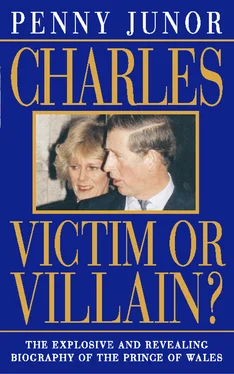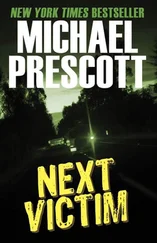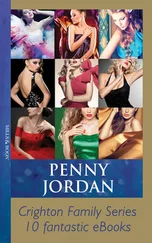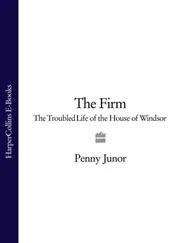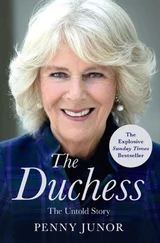ONE
‘They tell me there’s been an accident. What’s going on?’ Charles in the early hours of 31 August 1997
The first call alerting the Royal Family to Diana’s accident came through to Sir Robin Janvrin, the Queen’s deputy private secretary, at one o’clock on the morning of Sunday 31 August. He was asleep in his house on the Balmoral estate in Aberdeenshire. It was from the British ambassador in Paris, who had only sketchy news. There had been a car crash. Dodi Fayed, it seemed, had been killed, although there was no confirmation yet. The Princess of Wales, who had been travelling with him, was injured but no one knew how badly. Their car had smashed into the support pillars of a tunnel under the Seine. It had been travelling at high speed while trying to escape a group of paparazzi in hot pursuit on motorbikes.
Janvrin immediately telephoned the Queen and the Prince of Wales in their rooms at the castle. He then telephoned the Prince’s assistant private secretary, Nick Archer, who was staying in another house on the estate; also the Queen’s equerry and protection officers. They all agreed to meet in the offices at the castle, where they set up an operations room and manned the phones throughout the night.
Meanwhile, in London, the Prince’s team were being woken and told the news, ironically, by the tabloid press. The first call to Mark Bolland, the Prince’s deputy private secretary, came at 1 a.m. from the News of the World . Having gone to bed at his flat in the City after a very good dinner party, he let the answering machine take the call, and when he heard something about an accident in Paris dismissed it as the usual Saturday night fantasy. It was not until he heard the voice of Stuart Higgins, then editor of the Sun , a paper not published on a Sunday, speaking into the machine ten minutes later, that he realised something very odd was going on and picked up the phone. Higgins had much the same news as the Embassy. The reports were conflicting but it sounded as though Dodi had been killed and Diana injured.
The Prince’s press secretary, Sandy Henney, had also just gone to bed at her home in Surrey, having seen the last guest out after a fortieth birthday party for her sister-in-law. She too was woken by a journalist with a very similar story. The media, getting news directly from the emergency services, were in many ways better informed than the Embassy that night and provided a real service to the Prince’s staff.
Mark Bolland immediately rang Stephen Lamport, the Prince’s private secretary, at his home in west London, then Sandy Henney, and within minutes the phone lines across the capital and between London and Scotland were buzzing.
The Prince telephoned Bolland in London. ‘Robin tells me there’s been an accident. What’s going on?’
He wanted details. Shocked and unable to believe what he was hearing, he asked the same questions over and over again: What had caused the accident? What had Diana been doing in that situation? Who was driving? Where had it happened? Why had it happened? Questions to which, for the time being, there were no answers. They spoke for almost an hour.
There was no more concrete news. Reports one minute said Diana was seriously hurt, and the next suggested she had walked away with superficial injuries.
The Queen was also awake in her suite of rooms next door to her son’s on the first floor of the castle. Her private secretary, Sir Robert Fellowes, was on holiday in Norfolk, but like the Prince’s staff her own people were in constant touch with one another. The Prince’s private secretary on duty in Scotland was Nick Archer, but it was Stephen Lamport and Mark Bolland in London who were calling the shots.
Bolland telephoned Robin Janvrin to tell him that the Prince would be flying to Paris later that day to visit Diana in hospital, and needed a plane. ‘He’s going,’ he said. ‘This is not a matter for discussion. He is going to see his ex-wife.’
His request did not go down well initially. Was it the right thing to do? wondered Janvrin. An aeroplane of the Queen’s Flight couldn’t be ordered without the Queen’s specific agreement, and that was unlikely to be forthcoming.
‘Okay, fine,’ said Bolland. ‘We’ll take a scheduled flight from Aberdeen.’ The Queen would be irritated, no doubt, that yet again Diana was disrupting everyone’s lives. She had lost patience with Diana long ago, and as the week wore on she was confirmed in her belief that everything to do with her former daughter-in-law was always extraordinarily complicated.
Unbelievably, although the Queen and Prince Charles were just feet away from one another in their separate rooms, divided by paper-thin walls, it was their staff who were discussing the rights and wrongs of asking the Queen’s permission for Charles to use her aeroplane. Never was the true nature of this mother–son relationship more starkly demonstrated. Closely knit though the family appears, there is very little real communication between them. The Prince loves his parents dearly but they don’t talk. The Queen and the Duke of Edinburgh had not known quite how serious the problems with their son’s marriage had been until 1987, when two friends wrote to the Queen, having decided independently and simultaneously that she ought to know what was going on. Their letters landed on her desk on the same day. They had witnessed some odd incidents, like Diana falling down the stairs at Sandringham, and Diana had told them on one occasion that her life with the Prince was impossible because of Mrs Parker Bowles, but they had not discussed the problems with their son.
That Sunday, Charles, William and Harry had all been planning to fly to London. The boys’ summer holiday was almost over and they were due to meet up with their mother, who was flying back from Paris. Diana always had the children for the last few days before they went back to school at the start of a new term, so that she could get everything ready and make sure they had the right kit. The Prince would spend a few days at Highgrove, his home in Gloucestershire, before heading for Provence, in the South of France, his habitual haunt in early September.
The Prince was in no doubt that he wanted to go and see Diana in Paris that morning, but uncertain whether he should take the children. He was worried that her injuries would be too upsetting for them. Clearly no decision could be made until they knew how bad her injuries were. And as the hours crept painfully past, he talked about the Princess, whom he still loved and prayed for every night, despite the failure of their marriage, despite the hurt that had existed between them.
‘I always thought it would end like this,’ he said, ‘with me having to nurse Diana through some terrible injury or illness. I always thought she’d come back to me and I would spend the rest of my time looking after her.’
The walls in Balmoral are so thin that there is no keeping of secrets. One regular visitor says that if you want to have a private conversation you have to put the plug in the wash basin and talk quietly, or it will be all round the castle. Inevitably, with this kind of drama going on, most of the family were by now awake and watching the television or listening to the radio, which was already given over to news of the accident. The Duke of York was staying in the castle at the time, also Princess Anne’s son Peter Phillips, then aged nineteen, two friends of the Queen and Princess Margaret, the Queen’s sister. William and Harry were asleep and it became a priority to get their radios out of their bedrooms and the television out of the nursery, to prevent them waking up and switching one of them on.
At about 3.30 a.m., Mark Bolland rang Robin Janvrin again to find out how he was doing with the plane, and whether he had woken up the people at RAF Northolt, in Greater London, where it was based. In the middle of the conversation, at 3.45, they were interrupted by a telephone call that came through from the Embassy in Paris for Janvrin, and he put Bolland on to Nick Archer while he took the call.
Читать дальше
